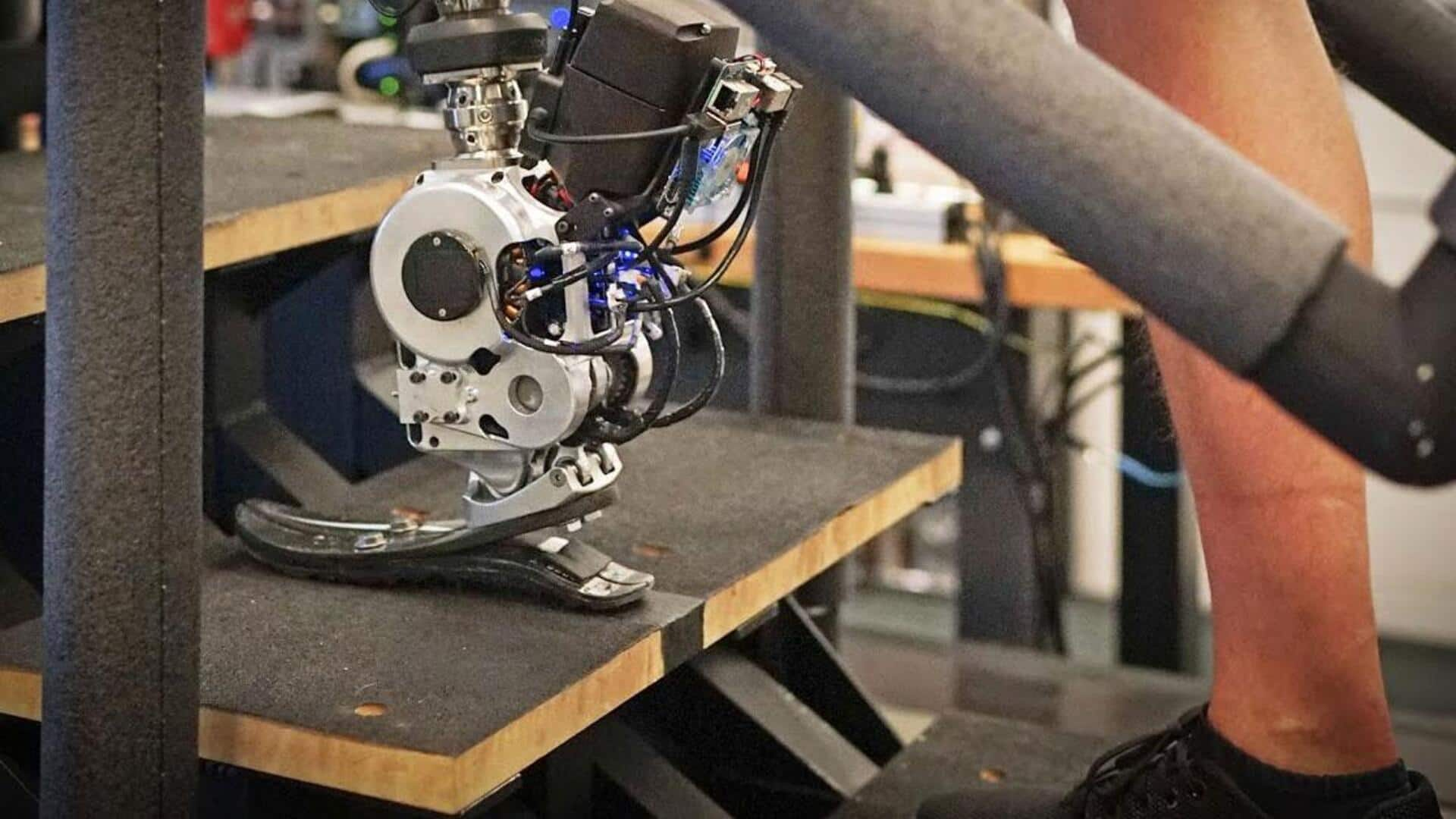
Future of mobility: MIT develops brain-controlled prosthetic leg
What's the story
Researchers at the Massachusetts Institute of Technology (MIT) have made a significant breakthrough in prosthetic technology, developing a leg that can be controlled using brain signals. Detailed in a paper published in Nature Medicine, this "neuroprosthetic" has been found to increase walking speed by 41% compared to conventional prostheses. The device is capable of real-time adaptation to various environments such as slopes and stairs, offering amputees an enhanced walking experience.
Revolutionary design
Prosthetic leg offers enhanced mobility and control
The study involved seven patients who underwent a unique surgery called "agonist antagonist myoneural interface" (AMI), enabling them to accurately sense the speed, position, and torque of their limbs. Unlike traditional prosthetics, this new leg works by detecting signals the wearer's brain sends to the residual limb. Hugh Herr, co-author of the study, and MIT Center for Bionics' co-director, stated that this is "the first prosthetic study in history that shows a leg prosthesis under full neural modulation."
Usage
AMI surgery enhances user experience
To facilitate a more natural gait, Herr and his team developed the AMI surgery, allowing muscles inside the residual limb to communicate with each other. This direct translation of signals into movement greatly enhances user experience. Lead author Hyungeun Song stated that "because of the AMI neuroprosthetic interface, we were able to boost that neural signaling, preserving as much as we could." The prosthetic not only enables walking on flat surfaces but also allows for activities like hiking or dancing.
Future prospects
A step forward in restoring function
Co-author and Harvard Medical School's associate professor Matthew Carty, sees this development as another step toward restoring function in patients with severe limb injuries. Herr, a double amputee himself, expressed his willingness to try the surgery and prosthetic on himself in the coming years. This groundbreaking innovation not only enhances mobility but also promises to significantly improve the quality of life for amputees.